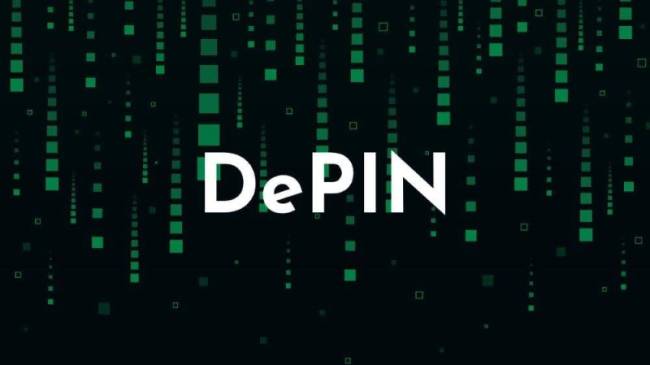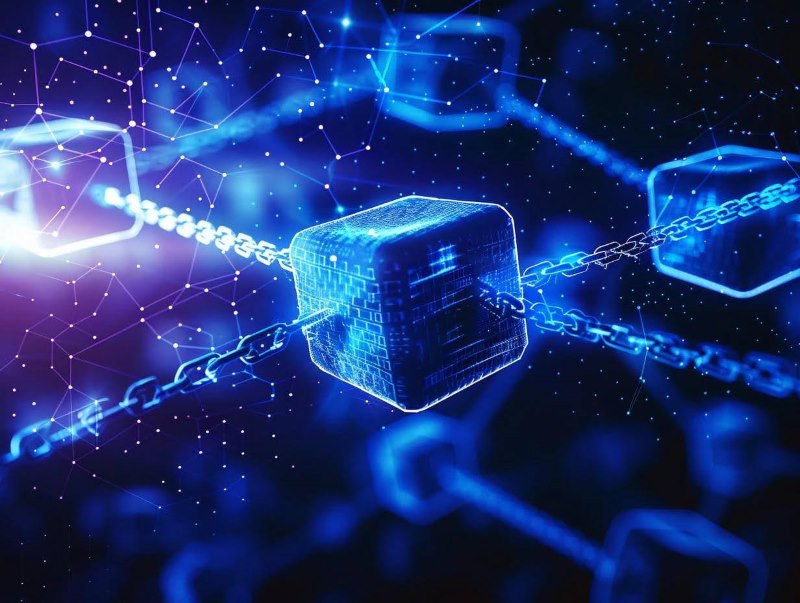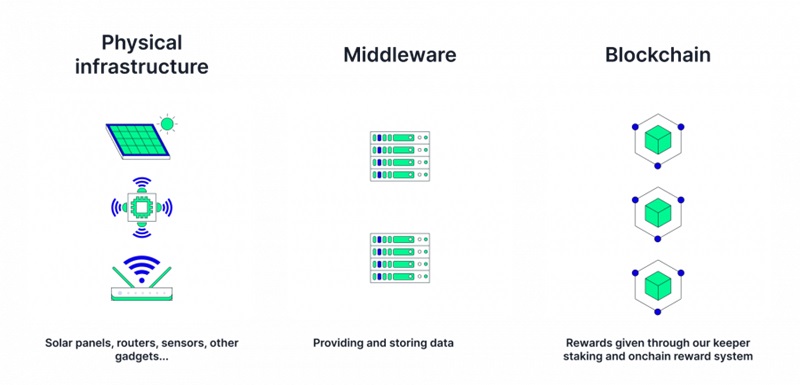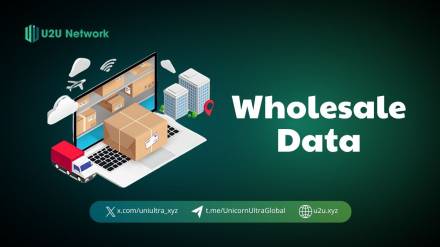DePINs narrative is capturing attention due to its potential to revolutionize how we build, maintain, and interact with real-world infrastructure. By leveraging blockchain technology and tokenized incentives, DePINs promise to democratize access, enhance efficiency, and create new economic models for essential services like energy, transportation, and telecommunications. This article delves into why the DePIN narrative is gaining momentum, the need for DePIN in Web3, and its challenges.
Table of Contents
Why DePIN narrative is important?
Imagine a future where the responsibility for building and maintaining vital infrastructure like roads, power grids, and communication networks shifts from centralized authorities to a global community. This is the compelling vision behind DePINs (Decentralized Physical Infrastructure Networks), which blend Web3 technology with the physical world to create a bridge between real-world businesses and the crypto realm.
The unique ability of DePINs to generate tokens offers both speculative and tangible value, setting them apart from traditional enterprises. By combining blockchain, the Internet of Things (IoT), and the Web3 ecosystem in a decentralized way, DePINs have the potential to disrupt existing markets and shape emerging ones, provided they are implemented effectively.

Unlike other Web3 ventures, DePIN systems can leverage existing markets and even expand them, enabling early revenue generation. This ability to address real-world demands from the outset is a significant advantage.
DePINs offer a catalyst for Web3 entrepreneurs, creating a self-reinforcing cycle that accelerates project growth. Scalability is essential for DePIN crypto projects aiming to increase their impact. By attracting more asset providers and expanding infrastructure deployment, projects can meet growing demand, extend network coverage, and accommodate a larger user base.
The need for DePIN in Web3
Web3's rise demands innovative, decentralized solutions that foster equality and accessibility.
At their core, DePINs provide a more inclusive and efficient model for launching and operating services within the Web3 ecosystem. By circumventing large corporations and empowering users to participate in building and governing these networks, DePINs level the playing field for all stakeholders.
One of the most compelling advantages of DePINs is their affordability compared to conventional infrastructure development. By utilizing existing hardware and eliminating the need for physical construction, DePINs significantly reduce the financial burden of creating, operating, and maintaining infrastructure, making them accessible to a wider audience.
DePIN architecture also enables rapid decision-making. Connecting existing equipment to the network is faster than building new infrastructure, allowing for swift deployment of services and initiatives. This agility helps businesses adapt quickly to market changes and stay competitive.
Moreover, DePINs' inherent scalability allows them to respond promptly to fluctuating local market demands. This responsiveness empowers both established companies and new entrants to adapt rapidly, fostering innovation and expanding the Web3 ecosystem.

Why is DePIN a hot topic recently?
DePIN (Decentralized Physical Infrastructure Networks) is a hot topic for several compelling reasons:
Impressive financial growth: DePIN projects have experienced remarkable growth in market capitalization, with some experiencing over 1000% year-over-year increases. This surge in investment has drawn significant attention within the crypto space and beyond.
.jpg)
Growing hype and interest: DePIN has captured the imagination of the crypto community and is generating buzz that extends into mainstream awareness. Google Trends reveals a sharp rise in search volume for "DePIN," indicating sustained interest in this emerging technology.
.jpg)
Unique technological innovation: DePIN offers a groundbreaking approach to managing critical infrastructure. By combining blockchain, the Internet of Things (IoT), and the physical world, it envisions a future where infrastructure is controlled by a global community rather than centralized authorities.

DePIN storage in 2024
Cloud and storage networks are key segments of DePIN, with experts predicting they will dominate the DePIN narrative in 2024.
Messari has devoted an entire subchapter to “DePIN Storage Wars”: “In a tech ecosystem driven by outrageous hype cycles, the economics behind DePIN networks are easier to understand, and their tokens are easier to underwrite. If decentralized networks eventually take 10% of the cloud market, the results in this sector will be eye-popping.”
The optimistic outlook is evident: Messari and social media believe DePIN storage solutions could effectively address the rising storage demands driven by AI and Big Data companies, or at the very least, the narrative around it could gain traction.
Challenges of DePIN
DePIN projects, while offering transparent and verifiable systems, face several challenges hindering widespread adoption.
Price volatility: The volatile nature of tokens used in DePIN projects can discourage participation. Contributors, often compensated in native tokens, face uncertainty as price fluctuations impact profitability. While hedging strategies exist, they may be inaccessible to less experienced participants or those holding tokens with smaller market caps. This volatility also affects demand, as fluctuating token prices can deter users from purchasing network services.
Profit-driven user base: Despite DePIN projects' valuable offerings, the performance of their native tokens heavily influences user engagement. Rising token prices attract profit-seeking users while falling prices and profitability in bear markets can lead to exodus, especially for tokens with smaller market caps and lower liquidity. Projects offering valuable services with a product-market fit can appeal to a broader audience beyond profit-driven users.
Lack of public awareness: Limited awareness of DePIN projects outside the crypto industry hinders adoption. Many people are unfamiliar with blockchain technology and digital assets, preventing them from recognizing the benefits of these decentralized services. Educating the public about the advantages of DePIN projects is essential for broader adoption.
The DePIN narrative is more than just hype; it represents a fundamental shift in how we envision the future of infrastructure. While significant challenges remain, the potential rewards are immense. As Web3 continues to mature, DePINs are poised to play a pivotal role in creating a more equitable, efficient, and resilient world. Continue to follow the latest information about DePIN and Web3 at the U2U Network website to become leaders in new technology trends!



.png)


